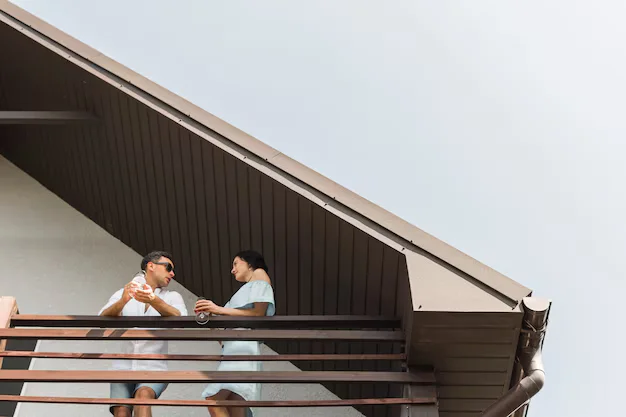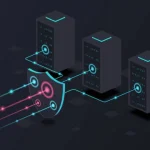Expanding your home with an addition is an exciting way to increase space, functionality, and value. Whether you’re building a new room, a sunroom, or an expanded living area, the roof of the addition plays a crucial role in ensuring durability, weather protection, and a cohesive aesthetic with the existing structure.
However, designing and installing addition roofs requires careful planning. A poorly integrated roof can lead to leaks, structural issues, and mismatched aesthetics that reduce curb appeal. Understanding the key factors in choosing materials, roof styles, and professional installation can help homeowners achieve a seamless and long-lasting home extension.
Why Addition Roofs Require Special Consideration
Unlike new construction roofs, addition roofs must integrate with an existing home while maintaining structural integrity and efficiency. The challenges of blending old and new materials, aligning rooflines, and ensuring proper drainage make roof additions a specialized project.
1. Structural Compatibility
Before adding a roof, an assessment of the current structure is essential. The load-bearing capacity of the existing walls and foundation must be evaluated to determine whether modifications or reinforcements are needed.
Factors to consider:
- Weight of roofing materials – Some options, such as slate or concrete tiles, may require additional structural support.
- Alignment with the existing roof – The new roof must connect seamlessly to avoid weak points that could lead to leaks.
- Proper ventilation – Ensuring airflow prevents moisture buildup and extends the lifespan of both the new and existing roof.
2. Matching Roof Styles for a Cohesive Look
One of the biggest challenges in addition roofs is making them look like they’ve always been part of the home. A mismatch in style or slope can make an addition look out of place.
Common roof styles for additions include:
- Gable Roof: A simple, classic design that complements many architectural styles.
- Hip Roof: Provides better wind resistance and a unified appearance for larger extensions.
- Shed Roof: A single-slope option that works well for modern and minimalist designs.
- Flat Roof: Often used for sunrooms or contemporary additions, allowing for potential rooftop gardens or solar panels.
3. Choosing the Right Roofing Materials
To maintain uniformity and functionality, addition roofs should use materials that blend well with the existing home.
Popular Roofing Materials for Home Additions:
- Asphalt Shingles: Cost-effective and easy to match with existing roofs.
- Metal Roofing: Long-lasting and energy-efficient, providing a sleek finish.
- Clay or Concrete Tiles: Ideal for homes with Spanish or Mediterranean architecture.
- Synthetic Roofing Materials: Lightweight and durable, designed to mimic traditional materials.
Matching color, texture, and material type helps create a seamless transition between the original home and the new addition.
Addressing Drainage and Water Flow
Proper drainage is critical when adding a roof to an existing structure. A poorly designed connection between the old and new roof can cause water to pool, leading to leaks, mold, and structural damage.
1. Flashing and Waterproofing
Installing high-quality flashing where the new and old roofs meet is essential. Flashing prevents water from seeping into gaps and redirects moisture away from vulnerable areas.
Best practices include:
- Using metal flashing for long-term durability.
- Sealing all seams and joints to prevent leaks.
- Installing an ice and water shield in regions with heavy rainfall or snow.
2. Gutter System Integration
Adding an extension to a home often requires modifying or expanding the existing gutter system. Gutters must be properly aligned to:
- Prevent water from pooling near the foundation.
- Redirect runoff efficiently to avoid erosion and basement leaks.
- Handle increased water flow from the additional roof surface.
Seamless gutter installations help maintain both function and aesthetic appeal.
Energy Efficiency and Ventilation
A well-designed addition roof enhances energy efficiency and indoor comfort. Proper insulation, ventilation, and material selection contribute to a home’s ability to regulate temperature and reduce energy costs.
1. Insulation Considerations
The roof of an addition should have insulation that meets or exceeds current energy standards. Effective insulation:
- Reduces heat loss in winter and heat gain in summer.
- Prevents condensation buildup that can lead to mold.
- Helps maintain consistent indoor temperatures.
2. Roof Ventilation
Adding a roof without considering ventilation can create trapped heat and moisture, leading to long-term damage. Key ventilation solutions include:
- Ridge vents: Allow warm air to escape from the peak of the roof.
- Soffit vents: Promote air circulation from the lower part of the roof.
- Attic fans: Improve airflow in spaces with limited natural ventilation.
Proper ventilation extends the lifespan of both the existing and new roof sections.
The Importance of Professional Installation
Constructing an addition roof is more complex than a simple repair or replacement. The connection between the old and new structures must be expertly handled to prevent long-term issues.
Why Professional Installation Matters
- Ensures precise alignment with the existing roof.
- Reduces the risk of leaks and weak points.
- Guarantees compliance with local building codes and permit requirements.
- Improves energy efficiency and durability.
Mike Ragan Roofing specializes in designing and installing addition roofs that seamlessly integrate with existing homes. Their expertise ensures that homeowners receive high-quality workmanship that enhances both function and curb appeal.
Common Challenges in Roof Additions and How to Overcome Them
Even with careful planning, home additions present unique challenges that need to be addressed early in the process.
1. Mismatched Rooflines
Solution: Work with a professional roofer to ensure a seamless transition, using matching materials and adjusting slopes as needed.
2. Water Drainage Issues
Solution: Install high-quality flashing, gutter systems, and proper roof slopes to direct water away from vulnerable areas.
3. Structural Weaknesses
Solution: Reinforce load-bearing walls and ensure the existing home can support the weight of the addition.
4. Aesthetic Inconsistencies
Solution: Choose roofing materials, colors, and textures that closely match the original structure for a cohesive appearance.
Conclusion
Adding a new section to your home requires careful planning, and the roof plays a vital role in ensuring durability, energy efficiency, and seamless integration with the existing structure. From selecting the right roofing materials to addressing drainage and ventilation, every detail matters in creating a long-lasting home addition.
By working with experienced professionals like Mike Ragan Roofing, homeowners can ensure that their addition roof is built to withstand the elements while maintaining the home’s aesthetic integrity. Proper planning, expert installation, and ongoing maintenance will keep the new roof’s in peak condition for years to come.







